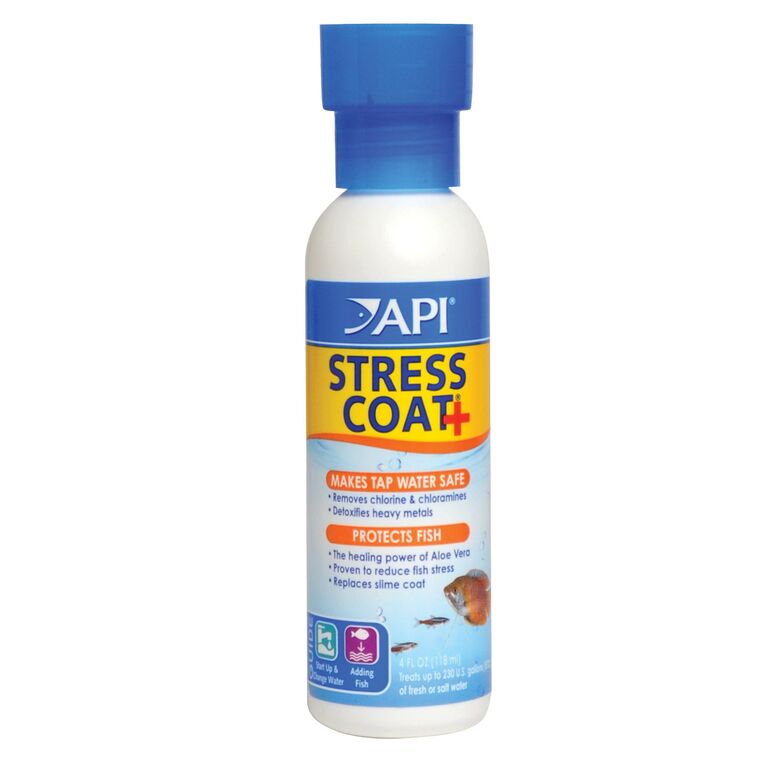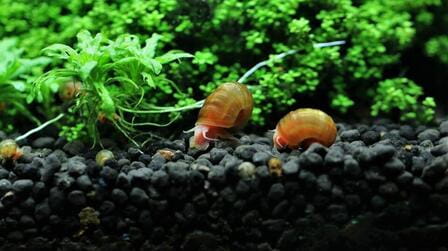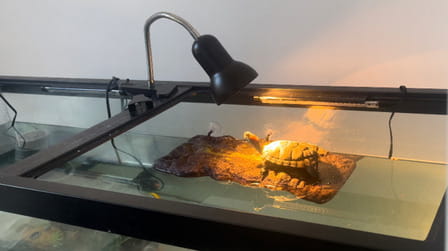Regardless of whether the reptile or amphibian uses its habitat, it is similar to how we use the house. They eat, sleep, relax and explore all over their area. The big difference is that we can quickly and easily remove food and bathroom waste from the house by flushing the toilet or by emptying the trash. Garbage collection is important, but even getting rid of it can leave harmful bacteria behind. To help reduce the chance of bad bacteria making your pet sick, it's important to clean and disinfect the habitat. Not all household cleaning products are safe for our pets, so let's learn how to clean a reptile tank with vinegar.
1. Vinegar
Also known as acetic acid, vinegar is a solution that makes a suitable cleaning solution, especially on the glass, but is often a less effective disinfectant. Vinegar can be used fully, mixed in a 50-50% solution with water for cleaning.
2. Bleach
Liquid bleach, or the brand name Clorox, is a solution consisting of sodium hypochlorite and sodium hydroxide, and water. Bleach is also a very commonly used anti-bacterial solution that can kill a wide variety of microorganisms. However, it should be used with caution as this solution can irritate skin, eyes, and mucous membranes on contact and fumes can also be harmful, especially if allowed to react with other substances.
This can lead to the inadvertent creation of volatile organic compounds commonly found in harsh and harmful household chemicals such as paint. The general guideline for disinfecting with bleach is to generally use no more than 10% solution. Chlorine bleach should be washed thoroughly after use to disinfect. Some other chlorine solutions, such as stabilized chlorine dioxide, or brand name Oxyfresh, can also be used if the solution is in a smaller percentage of 0.5% or less.
3. Hydrogen Peroxide
Hydrogen peroxide is another form of oxidizing bleach that works with oxygen but not chlorine. It is considered a relatively safe option for disinfection but is often less effective without the assistance of other agents. However, if you mix it with some other chemicals, like vinegar, it can become caustic and volatile, and as with other chlorine bleach solutions, care should be taken around its fumes. Hydrogen peroxide is usually available as a 3% solution, which is stronger but should be used with even greater caution. Any hydrogen peroxide solution should be washed thoroughly after use.
4. Alcohol

Alcohols, such as isopropanol cleaners, are solutions that are usually strong and effective at killing many viruses, bacteria, and fungi, but they evaporate quickly and also have a high concentration. flammable. For home furnishings and other smaller items, alcohol can be used at maximum concentration, although for household use alcohol is usually diluted to a 70% solution and in a 50-50% solution with the water. To contact mucous membranes that should also be avoided when using alcohol.
5. Ammonia
Ammonia is a highly caustic liquid compound of nitrogen and hydrogen. However, ammonia has a very pungent odor, contact with skin and mucous membranes should be avoided, and should also be washed off after use.
6. Chlorhexidine
Chlorhexidine is a general-purpose disinfectant that can be used to treat and disinfect a wide variety of surfaces, as well as skin and skin wounds at lower concentrations. This solution comes in many forms, although the most common for veterinary use and cleaning are chlorhexidine diacetate (or Nolvasan) and chlorhexidine gluconate or common solutions. You should also dilute to about 10% before use and usually do not need to rinse afterward. However, chlorhexidine may not be effective against some microorganisms.
7. Iodine

Iodine is an oxidant used as an antiseptic for wounds and skin care. Many household types have been "domesticated," which can be mixed with detergents, making them iodophors. Iodine is generally relatively safe to use as a disinfectant because it produces little or no toxic fumes, is readily available for cleaning and disinfecting, and is effective at killing a wide variety of microorganisms. Iodine can be relatively expensive, however, must often be used to its full capacity and can be toxic when ingested and/or cause skin irritation. They also may not be effective against all bacteria.
8. Some other chemicals

Several other chemical-free disinfection and sterilization methods are also available, but with varying degrees of success and effectiveness depending on the duration of treatment, the pathogen, and/or the surface being disinfected.
You also need to set the high temperature and exposure level at or above 120 degrees Celsius, or about 250 degrees Fahrenheit, which can kill many parasites and microorganisms.
Many household steam cleaners can reach these temperatures, but using them for the right amount and length of time for disinfection purposes is generally not recommended in most cases. High heat can melt or warp the plastic and many other surfaces and fixtures, but can effectively disinfect wood, stone, or other natural furnishings.
On the other hand, boiling and baking at 350 to 400 degrees Fahrenheit using an oven are options, but are also limited in effectiveness depending on the porosity of the object, the material, and the surface as well as the processes. Safety should be observed to prevent any fire.
Tips for cleaning the cage
Wash the cage
Wash the cage with a mild vinegar solution every four months. A minimal amount of vinegar helps to clean out any living and growing bacteria inside the gecko's cage and is a great alternative to bleach as it won't harm the geckos once they're put back inside. cage.
What's more, you just need to add a little vinegar to a bucket of water (usually one part vinegar and nine parts water) and stir the mixture thoroughly before cleaning the cage. Make sure to ventilate the cage before returning the gecko to the cage and take extra care to make sure all chemicals are also completely washed out of the cage.
Clean things up
Before cleaning the cage, you should clean up the items as neatly as possible. Each time you clear the cage, make sure to clear all the cushions, burrows, rocks, plants, etc. before placing the gecko back in the cage.
Cage cleaning
We all know how difficult it can be to have time to clean the gecko cage daily, however, in fact, as soon as there is any feces in the cage, it should be cleaned up immediately. Try to clean up feces as soon as you find them and clean the cage every night before going to bed or every morning when you wake up.
How to keep the tank clean?

If you follow the above steps, cleaning the turtle tank is very complicated. Because there are so many steps involved. So cleaning it twice a month makes the most sense.
But what about the dirt that accumulates during the rest of the day? To minimize dust in the turtle tank. Following these tips above will allow you to reduce the frequency of cleaning.
More live plants
Keeping aquatic plants alive can be a challenge. However, these live plants can reduce algae growth in turtle tanks with the right measures.
Floating plants have no gravel or sand at the bottom of the tank. However, make sure that you have tested the toxicity of the live plants you put in your tank.
Get rid of leftovers
In addition to biological waste, even uneaten food contributes to waste in the tank. If it's not in the habit of removing them from the tank, do so immediately.
Besides manual cleaning, it is also possible to add a few small fish species. They clean up excess food and also eliminate algae growth.
Add powerful filters
For biological waste, the filter will circulate the water in the tank, preventing the accumulation of excess biological waste in the tank. In addition, it can reduce the growth of bacteria in the water. The filters also aerate the water.
Is it safe to clean the aquarium with vinegar?
It is very safe to clean a stand-alone turtle tank with white vinegar. However, you should take out the turtle before cleaning. In addition, after cleaning, it is necessary to rinse the tank thoroughly several times before releasing the turtles.
The low and acidic pH of vinegar can harm turtles in the long run. So wash thoroughly after cleaning.
Furthermore, you should clean the inside of the tank wearing gloves. This reduces the risk of contamination and infection.
Avoid using metal cleaners for turtle tanks as they leave permanent scratches on the surface.
Make sure the tank is rinsed and completely dry before re-releasing the decorations and turtles. On the other hand, not just the tank and decorations, clean the filter and the heater as well. Avoid removing all water by turning the tank. Instead, clean the water in batches.
Conclusion
How clean a reptile tank with vinegar, cleaning their tank can be tricky, especially if you don't know how. Store-bought turtle tank cleaners can be overpriced.
White vinegar is not only used for basic cooking and cleaning but also helps to effectively clean the turtle tank.









